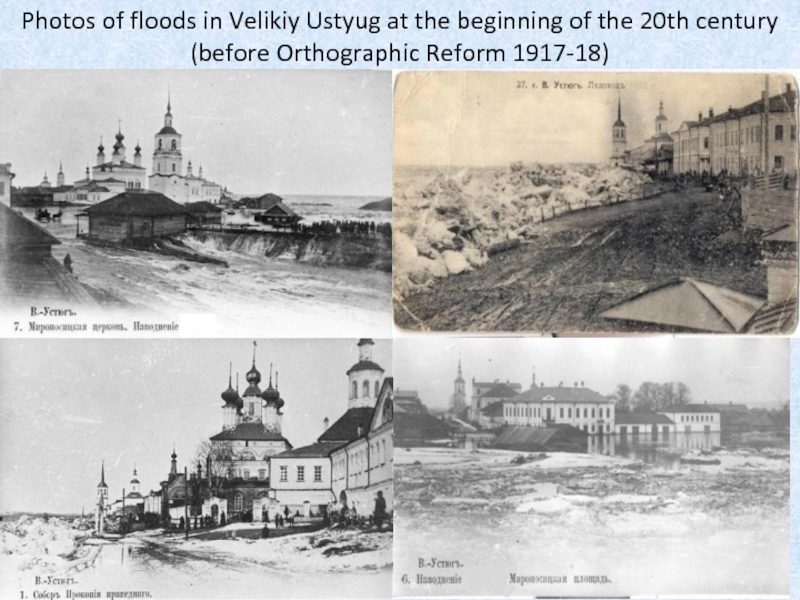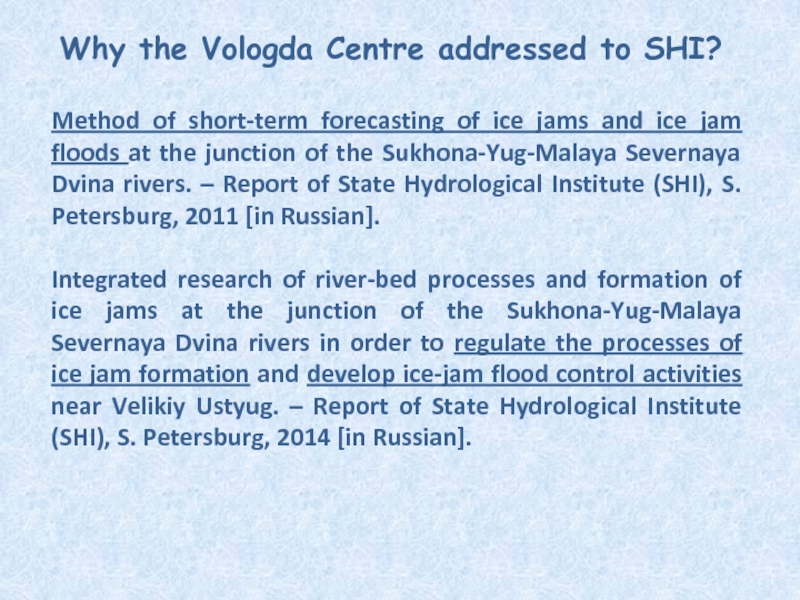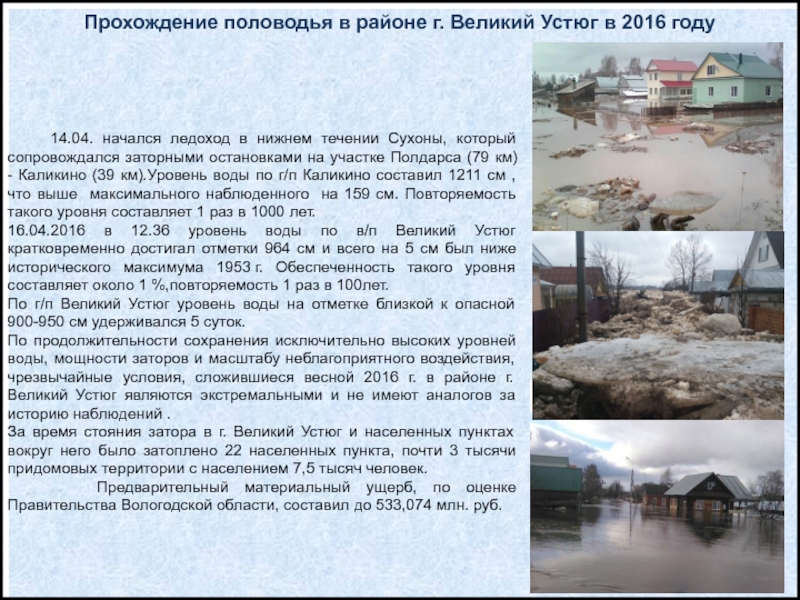Rivers near the town of Velikiy Ustyug in
spring 2016
(mgeorgievsky@hotmail.com)
Mikhail Georgievsky
(State Hydrological Institute, St. Petersburg, Russia)
Based on materials :
State Hydrological Institute, Saint Petersburg
Vologda Centre for Hydrometeorology and Environmental Monitoring, Vologda
Northern Territorial Administration for Hydrometeorological and Environmental Monitoring, Arkhangelsk








































